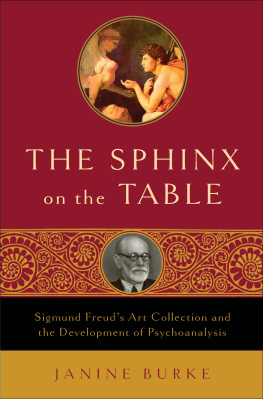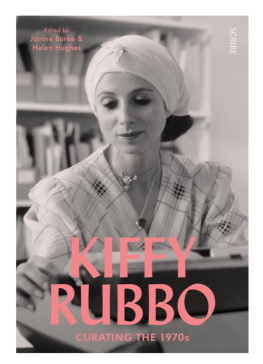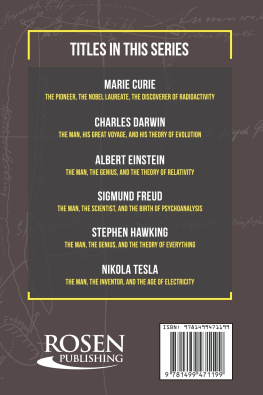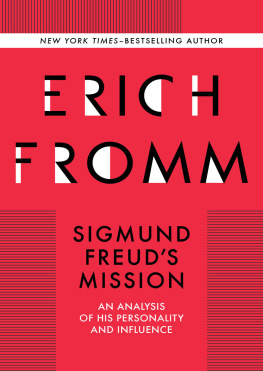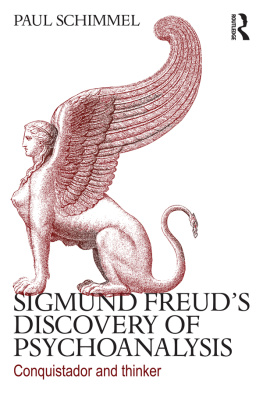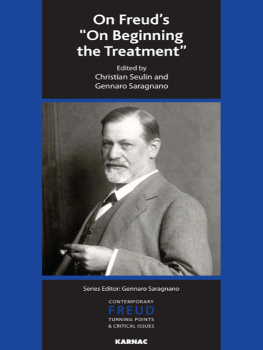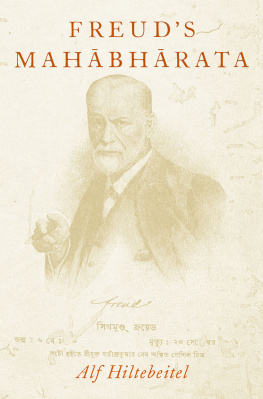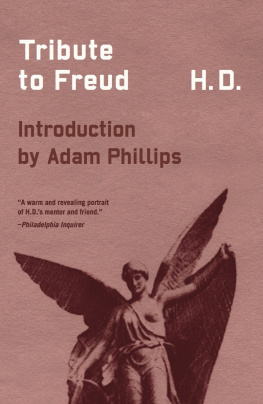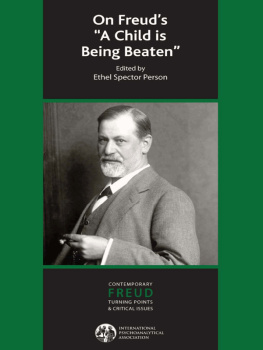THE SPHINX ON
THE TABLE
Also by Janine Burke
Nonfution
The Heart Garden: Sunday Reed and Heide
Australian Gothic: A Life of AlbertTucker
TheEyeof the Beholder: AlbertTucker'sPhotographs
Dear Sun:The Lettersof Joy Hester andSunday Reed"
Fieldof Vision, A Decade of Change:Women's Artin ikeSeventies
Jay Hester
Australian Women Artists, 18401940
Fiction
Lullalry
Company of Images
Second Sight
Speaking
Young Adultfiction
Our Lady of Apollo Bay
The Doll
The BlueFaraway
Journey to BrightWater
THE SPHINX ON
THE TABLE
Sigmund Freud's Art Collection and the
Development of Psychoanalysis
Janine Burke

Copyright Janine Burke 2006
All rights reserved. No part of this book may be used or reproduced in any manner whatsoever without written permission from the publisher except in the case of brief quotations embodied in critical articles or reviews. For information address Walker & Company, 104 Fifth Avenue, New York, New York, 10011.
Published by Walker Publishing Company, Inc., New York
Distributed to the trade by Holtzbrinck Publishers
All papers used by Walker & Company are natural, recyclable products made from wood grown in well-managed forests. The manufacturing processes conform to the environmental regulations of the country of origin.
Library of Congress Cataloging-in-Publication Data has been applied for.
eISBN: 978-0-802-71834-1
Published in Australia by Random House, Australia, 2006
as a Knopf book entitled The Gods of Freud
First U.S. edition 2006
Visit Walker & Company's Web site at www.walkerbooks.com
1 3 5 7 9 10 8 6 4 2
Printed in the United States of America by Quebecor World Fairfield
ToGabrielle Pizzi
All artefacts referred to are in the Freud Museum London, unless otherwise noted.
CONTENTS

Imay say at once that I am no connoisseur in art, but simply alayman Nevertheless, works of art do exercise a powerful effect on me.
SIGMUND FREUD
Anormal man with no complexes is unlikely to become a greatcollector.
MAURICE RHEIMS
FREUD WAS NOT ALONE WHEN he entered the sea of dreams. His companions were the gods of Egypt, Greece and Rome.
In the late 1890s, while writing The Interpretation of Dreams, Sigmund Freud became an art collector, developing an obsession with antiquity, beauty, myth and archaeology that led him to amass a brilliant private museum of over two thousand statues, vases, reliefs, busts, fragments of papyrus, rings, precious stones and prints. In Freud's study at Berggasse 19, Vienna, every available surface was so crowded with antiquities, he barely had room to move.
Despite Freud's modest assertion that he was simply a layman', his taste was precise and discerning. His collection is an intriguing catalogue of world civilisations where objects rare and sacred, useful and arcane, ravaged and lovely are on display: Neolithic tools, delicate Sumerian seals, a great goddess of the Middle Bronze Age, Egyptian mummy bandages inscribed with magical spells and stained with embalming ointment, superb Greek Hellenistic statues, images of the Sphinx, erotic Roman charms, luxurious Persian carpets and Chinese jade lions no bigger than a baby's fist.
The popular image of Freud as austere, remote and forbidding is contradicted by the collection, which reveals a very different personality: an impulsive, hedonistic spender, an informed and finicky aesthete, a tomb raider complicit in the often illegal trade in antiquities, a tourist who revelled in sensual, Mediterranean journeys, a generous fellow who lavished exquisite gifts on his family and friends, and a tough negotiator for a bargain. Though Freud prescribed the intense, inner journey of psychoanalysis for his patients, his own therapy was shopping. Arranging choice items on his desk, Freud confessed to Jung, 'I must always have an object to love'.
The collection offers multiple readings: as the embodiment of Freud's theories; as an investigation and celebration of past cultures; as an exercise in aesthetics; as a quest for excellence; as a memento of real and imagined journeys; as a catalogue of desires; and as a self-portrait.
Freud bought his first artworks in 1896, shortly after his father, Jacob (pi. 31), died. He was shaken by the event. 'In [my] inner self,' he reflected,'... I now feel quite uprooted.' Jacob's death provoked a crisis during which Freud plunged into his own unconscious, the underground recesses of his buried self. The Interpretation of Dreams was the result of that painful and exhilarating journey of self-analysis, the foundation stone of his life's work. For Freud, mourning and art were aligned at this crucial transition.
Patients were taken by surprise the first time they were ushered into his rooms. Sergei Pankejeff, the Wolf Man, felt he was not in a doctor's office but an archaeologists study, surrounded by 'all kinds of statuettes and other unusual objects, which even the layman recognised as archaeological finds from ancient Egypt'. A Russian aristocrat, Pankejeff had recounted to Freud his dream about a tree filled with white wolves. Writing about the case, Freud gave Pankejeff the pseudonym of the Wolf Man. To Pankejeff the artworks from 'long-vanished epochs' created a sense of sanctuary, a 'feeling of sacred peace and quiet... Everything here contributed to one's feeling of leaving the haste of modern life behind, of being sheltered from one's daily cares.'
Hilda Doolittle, the poet known as H.D., was stunned.
I cannot speak. I look around the room. A lover of Greek art, I am automatically taking stock of the room's contents. Priceless lovely objects here on the shelves to right, to left of me... I was to greet the Old Man of the Sea, but no one had told me of the treasures he had salvaged from the sea depth.
H.D. felt that Freud 'is at home here. He is part and parcel of these treasures.'
Freud built his collection during the grand era of archaeological discoveries. His hero was Heinrich Schliemann, the buccaneering amateur who unearthed the site of Troy in 1871. In 1900, Arthur Evans began excavating the Palace of Minos at Knossos on Crete; twenty-two years later Howard Carter discovered Tutankhamun's tomb. Freud was eager to compare the process of psychoanalysis to archaeology, telling Pankejeff, 'the psychoanalyst, like the archaeologist, must uncover layer after layer of the patient's psyche, before coming to the deepest, most valuable treasures'.
Max Pollak's 1914 etching (pi. 32) reveals the psychoanalyst's relationship with his art collection. Freud pauses while writing to gaze at the statues assembled on his desk. Perhaps he is completing Trie Moses of Micfielangelo, published the same year. Freud focuses on the central figure, Head of Osiris (Third Intermediate Period, 1075716 B.C or later; pi. 21), Egypt's major deity, the god of life, death and transformation. Murdered by his brother Seth, cut into pieces and scattered, Osiris was restored to life by the magical intervention of Isis, his sister-wife. The myth suggests the narratives of recovery and healing integral to psychoanalysis. Pollak's dramatic study in light and dark links Freud's creative process as a thinker and writer to the contemplation of art. The statues are cast in shadow, symbolising the past; Freud, the triumphant excavator of the modern mind, is dramatically illuminated. The gods bear witness as divine counsellors, providing inspiration, cultural tradition, historical context and aesthetic stimulus for Freud's investigations.
Next page
